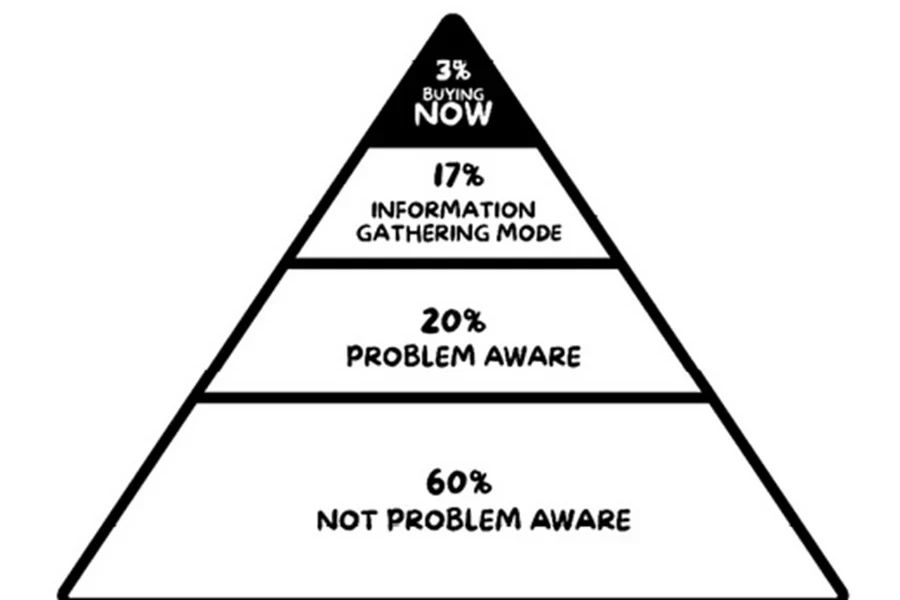Since the early stages of the internet, search engine optimization (SEO) has undergone many changes. Initially, businesses adopted a “keyword stuffing” mindset when it came to SEO. This meant that they would put keywords wherever they could in their content—and, at the time, this approach worked. The use of keywords and low-quality backlinks helped websites rank higher because it was easier to fool search engines.
But now, after 25 years, search engines have become smarter, and readers have become more demanding for high-quality content. As a result, the most common approach to SEO these days revolves around the strategic use of keywords, creating valuable website content, and earning high-quality backlinks. This approach is more developed than the previous ones. However, it still has some gaps, especially for businesses.
As an e-commerce business, the ultimate goal of your website content is conversions, not traffic. This is because it doesn’t help to have thousands of visitors from search engines if none of them actually make a purchase.
This has led to the development of a new approach, which is pain-point SEO. Read on to discover how this approach can be used to grow your e-commerce business in 2024.
Table of Contents
What is pain-point SEO?
How the pain-point SEO approach appeared?
Why should you adopt the pain-point SEO approach as an e-commerce business?
How to use pain-point SEO to boost your e-commerce business?
The bottom line
What is pain-point SEO?
Pain-point SEO is an approach where you create your website content around the pain points of your customers and not around keywords.
This doesn’t mean keywords are no longer important. Even though the keyword stuffing approach is outdated, keywords are still important in modern SEO, and they definitely still matter for pain-point SEO. However, the difference lies in the methodology of finding keywords.
In classical SEO, we perform keyword research and analysis, we select high-volume and low-competition keywords and use them to generate content ideas. In pain-point SEO, we use the problems our business solves to generate content ideas, and then we generate keywords from these content ideas.
| Classical SEO | Pain-point SEO | |
| 1 | Create a list of relevant keywords | Create a list of my target audience’s pain points which my business solves |
| 2 | Choose the best ones based on the volume/competition ratio | Generate content ideas |
| 3 | Generate content ideas | Have a list of relevant keywords |
It’s no secret that one of the most important factors in building a successful e-commerce business (or any other business) is having a clear offer and positioning where you solve specific problems for specific people. You should create your e-commerce business in a way that can always be summarized as My business solves X for Y where X is the pain point and Y is the target audience.
By extension, in the pain-point SEO approach, you create your content marketing strategy based on pain points as this will lead you to better choices of keywords and more valuable content that is tailored to your ideal client and not just leads.
Another key difference between Classical SEO and pain-point SEO is the type of keywords. The classical SEO approach focuses on striking a balance between high-volume and low-competition keywords, while pain-point SEO focuses on low-volume and high-buying intent keywords (which usually are long-tail keywords).
In pain-point SEO, the quality of keywords matters more than the volume. Keywords that speak directly to your ideal customers and represent their issues can have less search volume but will lead to better results for your business.

How the pain-point SEO approach appeared?
This term was introduced first by Grow & Convert (an SEO content agency). After working with different clients and analyzing the results, they noticed that blog posts with the most traffic are not always the posts that drive the most sales. This became clear when a blog post for one of their clients, specifically an e-commerce brand, kept generating over 60,000 monthly visitors for months and US$ 0 in sales.
This proves that prioritizing high-volume keywords without considering the search intent is not the right SEO strategy for a business. It’s great for personal blogs (and any website where the purpose is to share ideas, opinions, and experiences), but for businesses, it’s necessary to adopt a different approach.

Why should you adopt the pain-point SEO approach as an e-commerce business?
Let’s suppose you’re an e-commerce brand that sells physical sunscreens. At this exact moment, there might be someone somewhere using Google to search for “best physical sunscreen” and another person using Google to search for “is physical sunscreen effective”.
Who do you think is more likely to buy?
Of course, it’s the first person. They already know they need sunscreen, they know physical sunscreen is the right one for them, and the only thing left is to find the best one. In other words, they have a specific problem, they are aware of it, and they’re looking for a product that can solve it.
The end goal of an e-commerce business is to make a lot of sales consistently, and that’s why it makes more sense to focus more on keywords that target people who are already interested in purchasing your product.
Yes, those people are fewer compared to the ones who are still learning about the problem, and they’re definitely fewer than people who might not be problem-aware, but the results are better in terms of sales and profit.
In his book, Sell Like Crazy, Sabri Suby divides the market into 4 main categories:

While it’s important as a business to target all of these categories in the long term, it’s more effective and faster to convert the 20% who are more likely to buy (the 3% who are already in the buying mode and the 17% who are in the information-gathering mode) than to convert the 80% who need more time and content to move them up the pyramid.
It’s useless to put all of your effort as a business to appeal to the 80% of the market if none of them is ready or even willing to buy. In a sales funnel, those people represent the top of the funnel (TOFU) and the classical SEO approach speaks to them; while pain-point SEO is about the bottom of the funnel (BOFU).
Pain-point SEO helps you create the right content for people who are already at the bottom of the sales funnel. These people are ready to buy once they find the right solution, so the key is to be there when a customer needs a solution to their problem and deliver the right content immediately.
How to use pain-point SEO to boost your e-commerce business?
Applying pain-point SEO is about producing pain-point-driven content that can convert prospects who are at the bottom of the sales funnel. Here’s how to do that:
1. Identify the pain points of your ideal customers and how your product benefits them
The first step is, obviously, to identify and understand the pain points your customers have and how your product contributes to solving them. You should focus a lot on identifying your ideal customer profile because pain-point SEO is an approach that speaks mostly to your ideal customer who is actively looking for a solution and ready to invest to solve it.
This depends on your industry and segment, but in general, there are four key categories of pain points that you can focus on regardless of your product:
- Process: Your customer struggles with a technical or operational aspect of their life (or business) so they look for a better way to do things.
- Productivity: Your customer feels like the solution they use wastes their time because it’s complicated or takes a lot of time to use or implement so they want to optimize and improve that.
- Finance: Your customer already spends a lot of money on a solution and would like to reduce the price.
- Support: Your customer needs a high level of support in the process of solving their problem, preferably personalized support.
Read also: Competitive advantage
When you know your customer and craft a clear value proposition that solves the pain point your customers are looking to solve, you can now write down your list of pain points that your product solves.

2. Start from pain points to generate topics and keywords
Whether you want to adopt pain-point SEO or stick to the classical SEO approach, it’s useful to shift your mindset from thinking about content in terms of keywords to thinking in terms of full topics that have a clear added value and speak to a specific target audience.
In the pain-point SEO approach, start with using the pain points list to come up with topic ideas. Don’t focus on keywords at this phase, focus on topics and content ideas that are useful for a prospect at the bottom of the sales funnel and how you can lead them to buy your product.
It’s important to consider the search intent of this prospect. Most of the time, they will have commercial investigation and transactional intents (while prospects at the top of the sales funnel will have informational and navigational intents).
Use your pain points to generate topics with these search intents in mind, and focus on crafting a topic structure that meets the needs of a prospect who is in the final stages of their buyer’s journey.
3. Focus on high-intent keywords
Now, it’s time for a keyword search.
The end goal of the pain-point SEO approach is to boost conversions, so the most important practice is to prioritize keywords that represent a higher buying intent over any other keywords.
It’s also important to consider the whole queries your BOFU prospects might type when they’re searching. In general, pain-point keywords tend to be long-tail keywords; they might have lower search volume but in terms of conversion they’re the right ones (they also tend to be low-competition keywords).
Now use the topics generated previously to extract keywords and validate them using keyword research tools. You don’t want to have keywords with very low search volume so just make sure there is a moderate search volume for these high-intent keywords.
The bottom line
There are various ways that businesses can use SEO to drive traffic and ultimately conversions, but pain point SEO stands out because it helps you to identify those who have an intent to purchase. This approach is better suited to e-commerce businesses, as it is this segment of your audience that you should be aiming at.
The steps outlined in this article can get you started in using your audience’s paint points to guide your content. You can also learn more about this approach from this case study of an e-commerce business that experienced a 300% increase in sales after applying the pain-point SEO approach.




